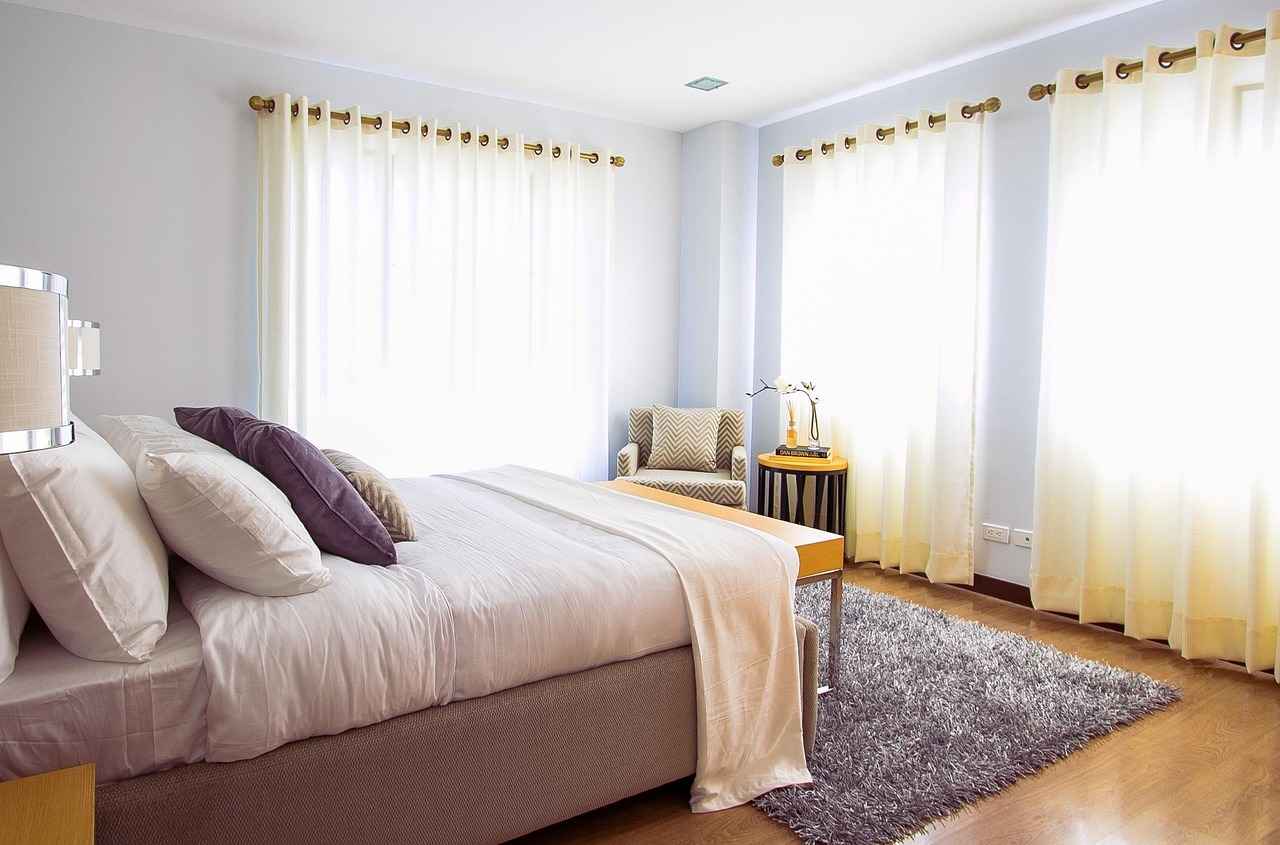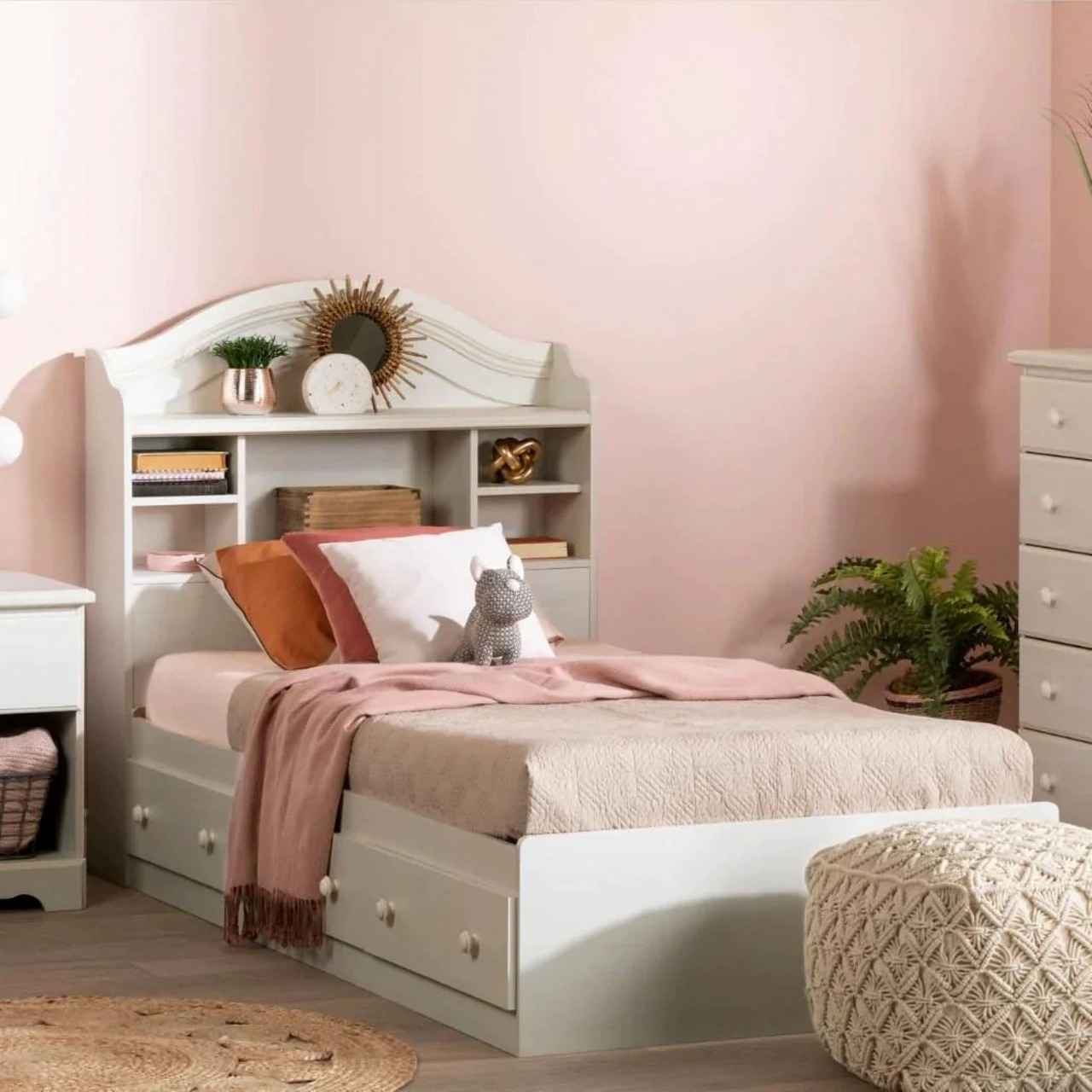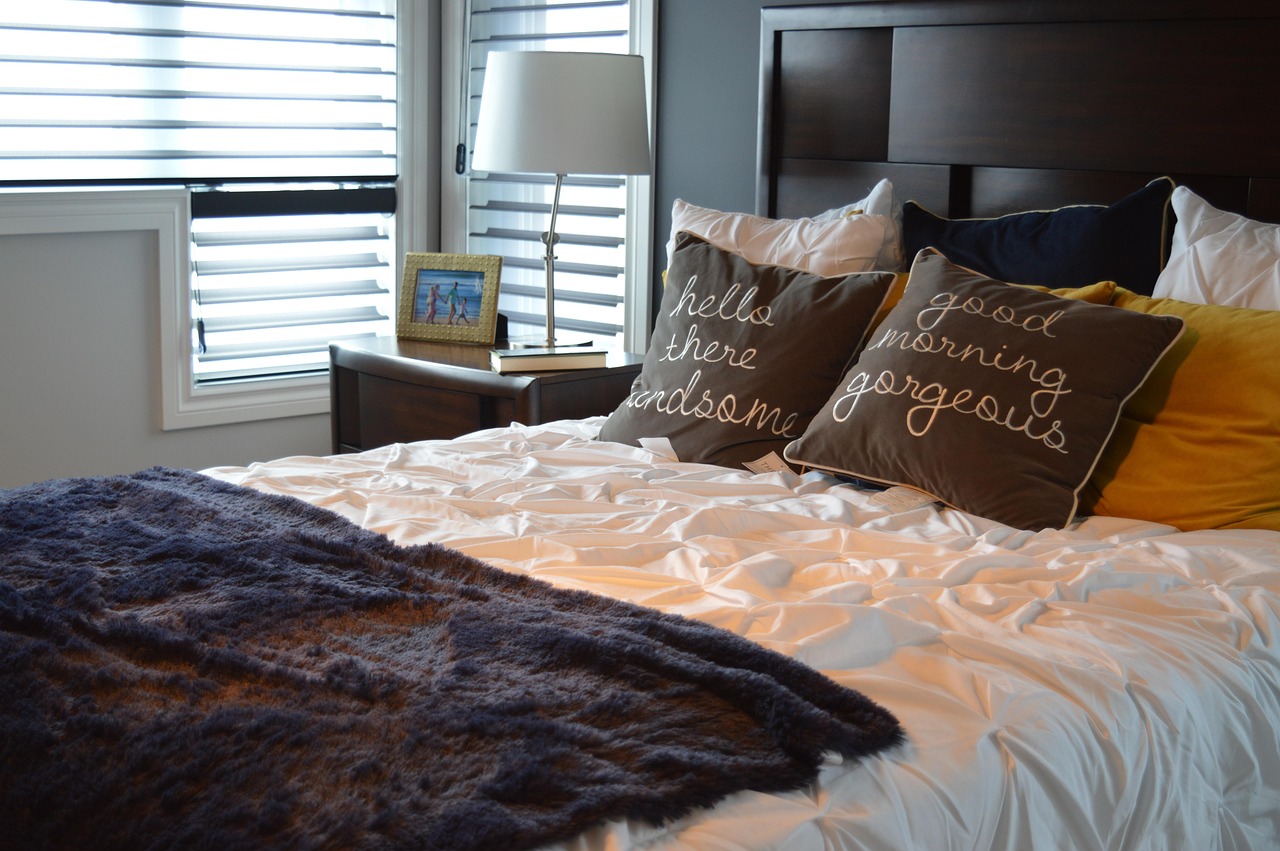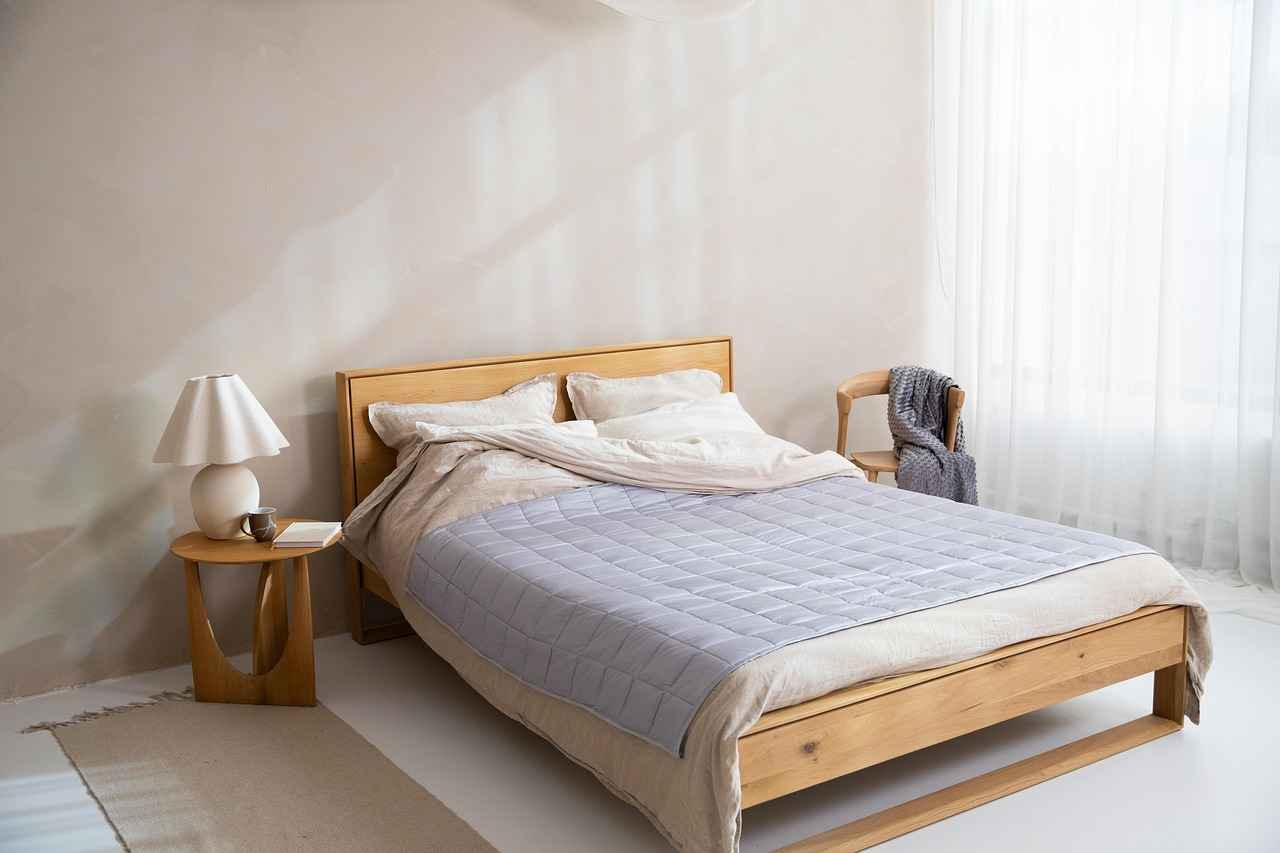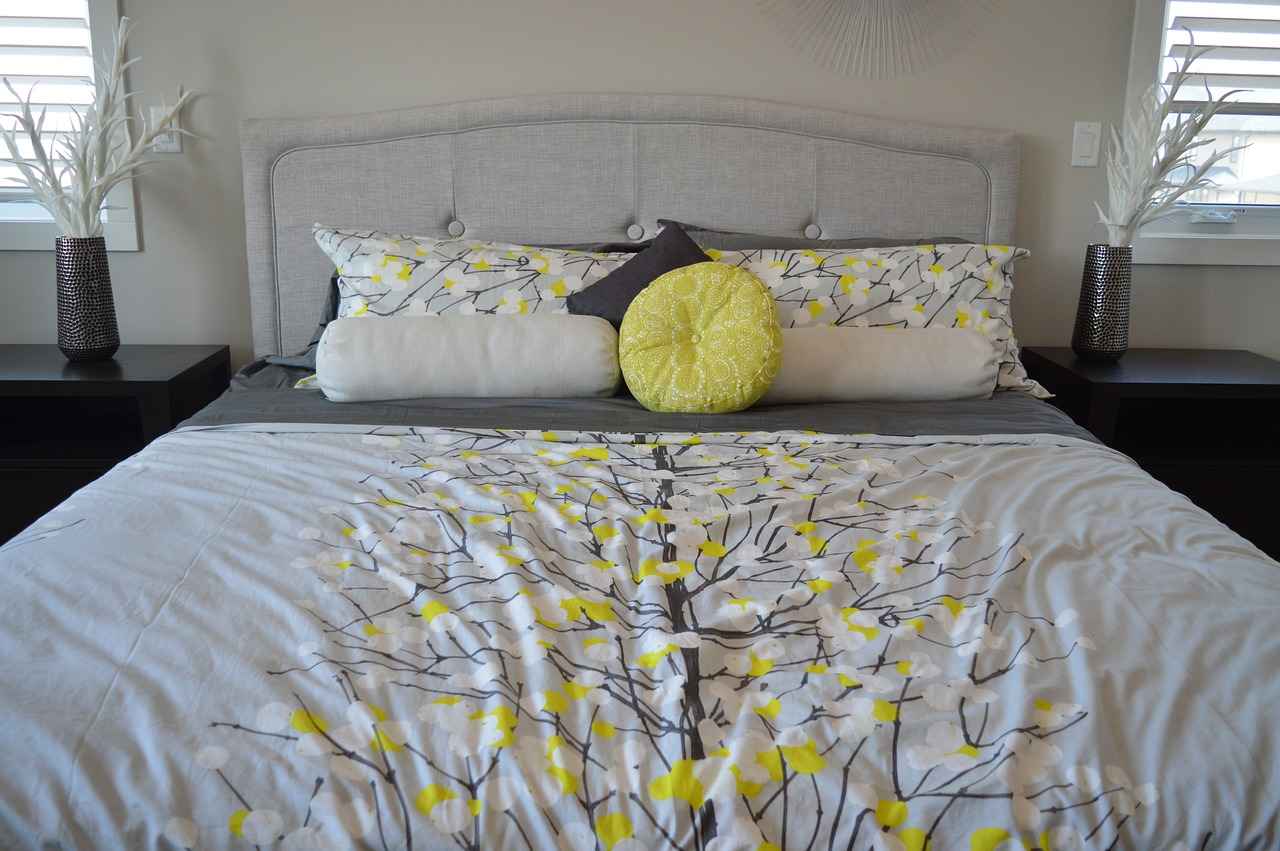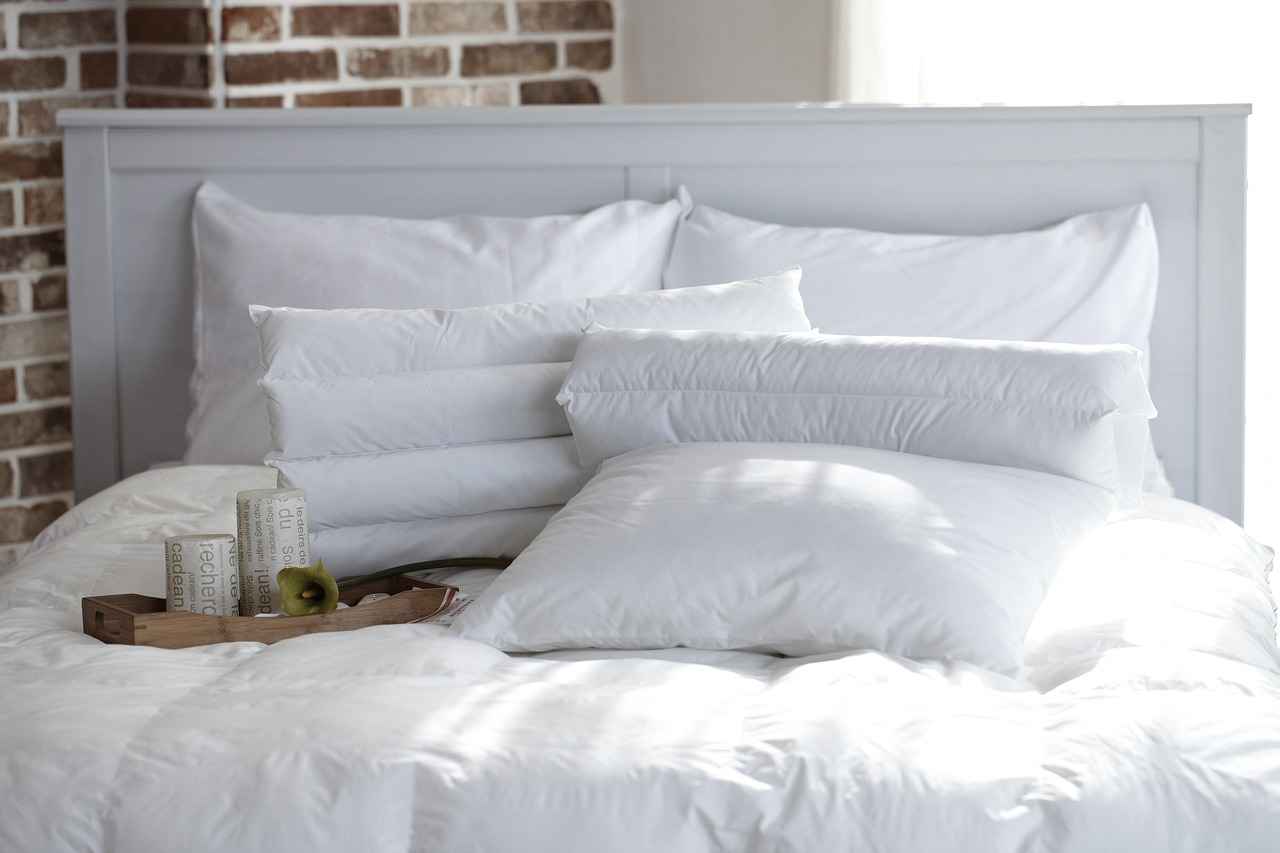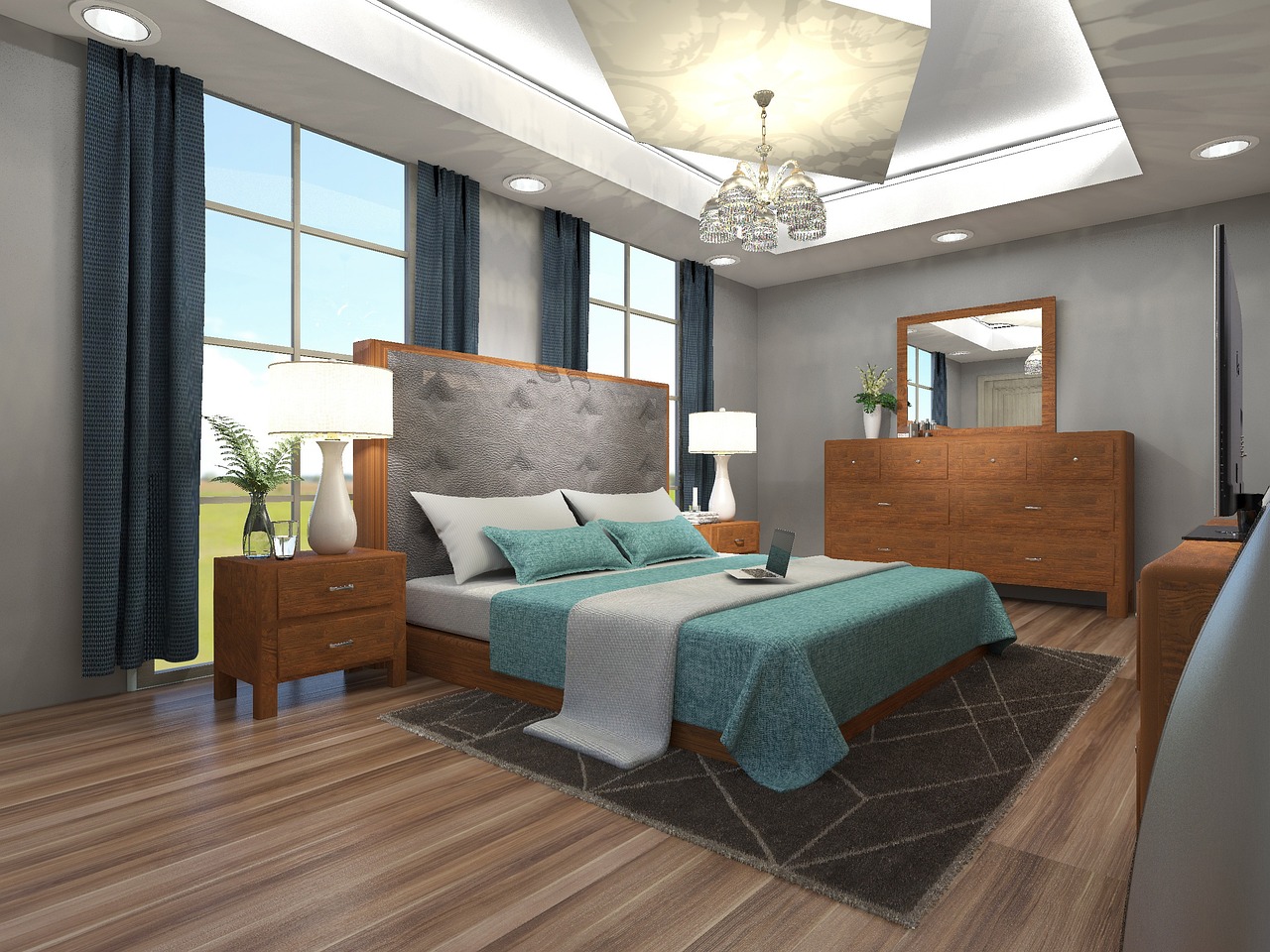This article explores various simple bed designs ideal for minimalist homes, showcasing images and styles that enhance tranquility and functionality while adhering to minimalist principles. Minimalism in home design is about stripping away the unnecessary, focusing on what truly matters. Beds, being one of the central pieces in a bedroom, play a crucial role in this design philosophy.
What is Minimalist Bed Design?
Minimalist bed design emphasizes simplicity, functionality, and clean lines. It embodies the idea that less is more, where each element serves a purpose without excess ornamentation. The focus is on creating a serene environment that promotes relaxation and peace.
Benefits of Minimalist Beds
- Space Efficiency: Minimalist beds are crafted to maximize space, making them ideal for smaller rooms. Their low-profile designs and lack of bulky features create a more open and airy environment.
- Enhanced Aesthetics: The sleek lines and simple forms of minimalist beds contribute to a sophisticated look, elevating the overall aesthetic of a bedroom.
Popular Minimalist Bed Styles
- Platform Beds: Known for their sturdy structure and low height, platform beds are a staple in minimalist design. They often feature natural materials and can be paired with various bedding styles.
- Murphy Beds: Excellent for maximizing space, Murphy beds fold up against the wall when not in use, making them perfect for multifunctional spaces.
Materials for Minimalist Beds
Choosing the right materials is crucial for achieving a minimalist look. Here are some popular materials:
- Wooden Beds: Timeless and warm, wooden beds add a touch of nature to minimalist designs. Different types of wood, such as oak or walnut, can enhance the aesthetic appeal.
- Metal Frames: Offering a modern and sleek look, metal bed frames complement minimalist decor perfectly. They are durable and can be styled with various bedding options.
Color Palettes for Minimalist Bedrooms
Color plays a significant role in minimalist design. The following palettes work well:
- Neutral Tones: Shades of white, beige, and gray create a calming atmosphere, essential for a minimalist bedroom.
- Accent Colors: A pop of color can add personality without overwhelming the space. Consider using soft pastels or muted tones to maintain balance.
Incorporating Minimalist Beds into Your Home
Integrating a minimalist bed into your existing decor requires thoughtful planning. Here are practical tips:
- Choosing the Right Bedding: Opt for bedding that complements the minimalist aesthetic. Solid colors and simple patterns can enhance the overall look.
- Arranging Your Bedroom: The arrangement of furniture is crucial. Keep pathways clear and maintain a clutter-free environment to promote tranquility.
By embracing minimalist bed designs, you can transform your bedroom into a peaceful retreat that reflects your personal style while adhering to the principles of simplicity and functionality. Whether you prefer the organic feel of wood or the modern touch of metal, there is a minimalist bed design that can meet your needs and enhance your living space.

What is Minimalist Bed Design?
Minimalist bed design is a concept that champions the principles of simplicity, functionality, and clean lines. This design philosophy is rooted in the belief that less is more, focusing on essential elements that contribute to a serene and uncluttered living space. In this section, we will delve deeper into the core principles of minimalist design and how they manifest in bed aesthetics, creating spaces that promote tranquility and efficiency.
At its essence, minimalist bed design strips away the superfluous, prioritizing form and function. The result is a bed that not only serves its primary purpose—providing a comfortable place to sleep—but also enhances the overall aesthetic of the bedroom. Key features often include low profiles, geometric shapes, and a lack of ornate details. This approach allows the bed to blend seamlessly with the surrounding decor, fostering a sense of harmony and balance.
One of the fundamental principles of minimalist design is the use of natural materials. Beds crafted from wood or metal not only provide durability but also add a touch of warmth or modernity, respectively. The choice of materials is crucial, as they can significantly influence the visual appeal and tactile experience of the bed. For instance, a simple wooden frame can evoke a sense of coziness, while a sleek metal frame may impart a contemporary edge.
- Functionality: Minimalist beds are designed with practicality in mind. Many designs incorporate built-in storage solutions, such as drawers or shelves, maximizing space without compromising style.
- Clean Lines: The absence of intricate patterns or excessive embellishments results in a streamlined look that is visually appealing and easy to maintain.
- Versatility: Minimalist beds can easily adapt to various decor styles, making them a versatile choice for any bedroom.
Another significant aspect of minimalist bed design is the color palette. Typically, minimalist designs favor neutral tones like whites, grays, and beiges. These colors create a calming atmosphere and allow for easy integration with other elements in the room. However, incorporating accent colors can add personality without overwhelming the minimalist aesthetic. For instance, a pop of color in the bedding or decorative pillows can enliven the space while still adhering to the simplicity that defines minimalism.
In summary, minimalist bed design emphasizes the beauty of simplicity through its clean lines, functional features, and thoughtful use of materials and colors. By focusing on these core principles, you can create a bedroom that not only looks sophisticated but also promotes a sense of peace and well-being. Embracing this design philosophy can transform your sleeping space into a serene retreat, encouraging restful nights and rejuvenating mornings.

Benefits of Minimalist Beds
Minimalist beds have gained popularity in modern interior design due to their numerous advantages, which cater to both aesthetic and functional needs. By focusing on simplicity and efficiency, these bed designs create a serene environment while maximizing space. In this section, we delve deeper into the benefits of adopting minimalist bed designs in your home.
- Space Efficiency: One of the most significant advantages of minimalist beds is their ability to save space. These beds often have a low profile and a streamlined design, making them perfect for smaller rooms. By reducing bulk, minimalist beds create a more open and airy atmosphere, allowing for better movement and flow within the space.
- Calming Atmosphere: Minimalism is all about tranquility. The clean lines and uncluttered look of minimalist beds can contribute to a calming environment. A well-organized bedroom with minimal distractions can enhance relaxation, making it easier to unwind after a long day.
- Enhanced Aesthetics: Minimalist beds often feature sleek designs that elevate the overall look of a bedroom. Their simplicity allows them to blend seamlessly with various decor styles, from contemporary to Scandinavian. This versatility ensures that your bed becomes a focal point without overwhelming the rest of the room.
- Affordability: Many minimalist bed designs are budget-friendly. The emphasis on simple materials and construction means that you can often find quality options at a lower price point compared to more ornate designs. This makes minimalist beds accessible to a wider audience, allowing more people to enjoy their benefits.
- Durability: Minimalist beds are typically constructed from high-quality materials, ensuring longevity. The straightforward designs often eliminate unnecessary components that can wear out over time, making them a wise investment for your home.
- Easy Maintenance: With fewer intricate details and embellishments, minimalist beds are generally easier to clean and maintain. A simple dusting or wipe-down is often all that’s needed to keep your bed looking fresh and inviting.
- Encourages Minimalism in Other Areas: Adopting a minimalist bed can inspire a broader minimalist lifestyle. By starting with your bedroom, you may find it easier to declutter and simplify other areas of your home, leading to a more organized and peaceful living environment.
In summary, the benefits of minimalist beds extend far beyond their aesthetic appeal. They offer practical solutions for space management, contribute to a calming atmosphere, and promote a lifestyle centered around simplicity and functionality. By choosing a minimalist bed design, you not only enhance your bedroom’s appearance but also create a sanctuary that fosters relaxation and well-being.
Space Efficiency
In today’s fast-paced world, the need for efficient living spaces has never been more critical. As urban living spaces become increasingly compact, the demand for furniture that maximizes utility without sacrificing style has surged. This is where minimalist beds come into play, particularly in the context of .
Minimalist beds are specifically engineered to optimize the use of available space, making them a perfect fit for smaller rooms. Unlike traditional bed designs that can dominate a room, minimalist beds feature clean lines and simple forms that contribute to a sense of openness. By eliminating unnecessary embellishments and bulky structures, these beds create a more airy environment, allowing for better movement and flow within the room.
One of the defining characteristics of minimalist bed design is its low-profile structure. This design choice not only enhances the visual appeal of the room but also makes the space feel larger. For instance, platform beds, which are a popular choice in minimalist design, sit closer to the ground and often lack a headboard, further contributing to an unobtrusive aesthetic. This can be particularly beneficial in small bedrooms, where every inch counts.
Moreover, minimalist beds can incorporate storage solutions that further enhance space efficiency. Many designs include built-in drawers or utilize the area beneath the bed for storage, helping to keep the room organized and clutter-free. This dual functionality is invaluable in smaller spaces, where maximizing storage is essential.
In addition to their aesthetic and functional benefits, minimalist beds also promote a calming atmosphere. The simplicity of these designs encourages a more serene environment, which can be particularly important in a bedroom— a space meant for relaxation and rest. By reducing visual clutter, minimalist beds help to create a sanctuary away from the chaos of daily life.
Furthermore, the choice of materials in minimalist bed design plays a significant role in enhancing space efficiency. Many minimalist beds are constructed from lightweight materials such as metal or engineered wood, making them easier to move and rearrange as needed. This adaptability is crucial for those living in smaller spaces, where the layout may need to change to accommodate different activities or guests.
When it comes to color palettes, minimalist beds often feature neutral tones that blend seamlessly with the surrounding decor. This approach not only enhances the bed’s ability to fit into various design schemes but also contributes to a more spacious feel. Light colors can reflect natural light, further amplifying the sense of openness in a room.
In conclusion, the of minimalist beds makes them an ideal choice for those looking to maximize their living areas without compromising on style or comfort. By embracing the principles of minimalist design, individuals can create functional, tranquil, and visually appealing spaces that cater to modern living needs.
Enhanced Aesthetics
The design of a bedroom plays a crucial role in setting the tone for relaxation and comfort. One of the most significant elements in achieving a serene atmosphere is the choice of bed. Minimalist beds, with their clean lines and simple forms, contribute significantly to the overall aesthetic of a bedroom. This section explores how these designs can elevate the visual appeal of your personal space.
Minimalist bed designs are characterized by their uncluttered appearance and focus on functionality. By stripping away unnecessary embellishments, these beds allow for a more harmonious environment. The absence of ornate details helps to create a sense of calm, making them an ideal choice for those seeking a tranquil retreat in their homes.
One of the primary advantages of minimalist beds is their ability to complement various interior styles. Whether your bedroom features a modern, industrial, or Scandinavian aesthetic, minimalist beds can seamlessly integrate into any decor. Their versatile nature allows homeowners to express their personal style without overwhelming the space.
Moreover, the color palette associated with minimalist bed designs often consists of neutral tones, such as whites, grays, and beiges. These colors not only enhance the sleekness of the bed but also create a cohesive look throughout the room. The subtlety of these hues contributes to an atmosphere of peace and tranquility, making the bedroom a sanctuary for rest.
In addition to color, the materials used in minimalist beds also play a vital role in enhancing their aesthetic appeal. Many designs utilize natural materials like wood and metal, which add texture and warmth to the space. For instance, a wooden platform bed can introduce a touch of nature indoors, while a metal frame can evoke a more industrial vibe. The choice of material can significantly influence the overall feel of the room.
Furthermore, the scale and proportion of minimalist beds are thoughtfully considered. These beds are often designed to occupy less visual space, which can make a room feel larger and more open. The low-profile design of platform beds, for example, draws the eye downward, creating an illusion of height in the room. This design principle is particularly beneficial in smaller bedrooms, where maximizing space is essential.
Another aspect to consider is the accessorizing of minimalist beds. While the bed itself may be simple, the choice of bedding and decorative elements can enhance its aesthetic. Opting for high-quality linens in soft textures can elevate the simplicity of the bed, adding a layer of comfort without compromising the minimalist theme. Additionally, incorporating a few carefully selected accessories, such as a single piece of art or a minimalistic lamp, can further enhance the overall look without creating clutter.
In conclusion, the enhanced aesthetics of minimalist beds lie in their ability to create a sophisticated and serene environment. By focusing on simplicity, functionality, and thoughtful design, these beds not only serve their primary purpose but also contribute to the overall beauty of the bedroom. Embracing minimalist design principles can transform your space into a peaceful haven, allowing you to unwind and recharge in style.

Popular Minimalist Bed Styles
When it comes to creating a serene and uncluttered bedroom environment, minimalist bed styles play a crucial role. These designs not only embody simplicity but also cater to a variety of tastes and preferences. Below, we explore some of the most popular minimalist bed styles that can inspire your bedroom transformation.
- Platform Beds
Platform beds are a quintessential choice in minimalist design. They feature a low-profile frame that rests directly on the ground, eliminating the need for a box spring. This design offers a sleek appearance and is often constructed from materials like wood or metal, providing both durability and style. The simplicity of platform beds allows them to blend seamlessly into any decor, making them a versatile option for various bedroom themes.
- Murphy Beds
For those seeking space-saving solutions, Murphy beds are ideal. These foldable beds can be tucked away into a wall unit when not in use, freeing up valuable floor space. This style is particularly beneficial in small apartments or multifunctional rooms. The modern designs available today often incorporate additional storage, such as shelves or cabinets, enhancing functionality without compromising on aesthetic appeal.
- Sleigh Beds
While traditionally more ornate, sleigh beds can also be designed in a minimalist style. Characterized by their curved headboards and footboards, these beds can be made from solid wood and finished in neutral tones to maintain a simple yet elegant look. They offer a touch of sophistication while adhering to minimalist principles, making them a perfect choice for those who appreciate classic designs.
- Canopy Beds
Canopy beds can be reimagined in a minimalist context by using sheer fabrics or wooden frames that create an open and airy feel. The simplicity of the design allows for customization while keeping the overall look uncluttered. These beds can serve as a statement piece in your bedroom, adding a sense of tranquility and elegance without overwhelming the space.
- Low Beds
Low beds are designed to sit closer to the ground, promoting a sense of calm and grounding in the bedroom. Often featuring clean lines and simple materials, these beds can be an excellent choice for those who prefer a more contemporary aesthetic. The low profile encourages a spacious feel, making the room appear larger and more open.
- Adjustable Beds
Incorporating technology, adjustable beds offer both comfort and functionality. They allow users to change the position of the mattress, catering to personal preferences for sleeping or lounging. Many modern adjustable beds feature a minimalist design, focusing on clean lines and subtle aesthetics that fit seamlessly into a minimalist bedroom.
Each of these styles showcases the essence of minimalist design, emphasizing functionality, simplicity, and aesthetic appeal. When selecting a bed style, consider your personal preferences and how each option can contribute to a serene and uncluttered environment. By choosing the right minimalist bed, you can create a space that not only looks beautiful but also promotes relaxation and tranquility.
Platform Beds
Platform beds have emerged as a quintessential element in the realm of minimalist design, celebrated for their low-profile and sturdy structure. These beds not only serve a functional purpose but also contribute significantly to the overall aesthetic of a bedroom. In this section, we will explore the distinctive features and numerous benefits of platform beds, providing insights that cater to both design enthusiasts and practical homeowners.
At their core, platform beds are characterized by a solid base that supports the mattress without the need for a box spring. This unique design facilitates a sleek appearance that aligns perfectly with minimalist principles. The low height of platform beds creates a sense of openness in the room, making them ideal for spaces where height can feel overwhelming. Additionally, many platform beds come equipped with built-in storage solutions, allowing for efficient use of space in smaller rooms.
- Space-Saving Design: The compact nature of platform beds makes them perfect for smaller apartments or rooms. They can maximize floor space, allowing for better movement and a less cluttered environment.
- Versatile Style: Available in various materials and finishes, platform beds can seamlessly blend with different decor styles, from modern to rustic.
- Stability and Support: The solid base provides excellent support for the mattress, which can enhance sleep quality by reducing motion transfer.
- Easy Maintenance: With fewer components than traditional beds, platform beds are easier to clean and maintain, making them a practical choice for busy lifestyles.
When it comes to materials, platform beds offer a range of options, each with its own unique benefits:
- Wood: Wooden platform beds add warmth and character to a room. Hardwoods like oak or maple are particularly popular for their durability and timeless appeal.
- Metal: Metal frames provide a modern and industrial look. They are often lighter and can be easier to move, which is a plus for those who like to rearrange their space.
- Upholstered: For added comfort and style, upholstered platform beds can introduce texture and color to a minimalist bedroom while maintaining a sleek profile.
Styling a platform bed can enhance its minimalist charm while allowing for personal expression. Here are some tips:
- Choose Simple Bedding: Opt for solid colors or subtle patterns that complement the bed’s design. Natural fabrics like cotton or linen work well to maintain a clean look.
- Add a Statement Piece: Consider incorporating a bold artwork or a unique bedside table to draw attention without overwhelming the space.
- Keep Accessories Minimal: Limit decorative pillows and throws to maintain a clutter-free appearance. A few carefully chosen items can make a big impact.
In summary, platform beds are not just functional furniture pieces; they are essential elements of a minimalist lifestyle. Their combination of style, support, and space-saving capabilities makes them an ideal choice for those looking to create a serene and organized bedroom environment. As you explore the world of platform beds, consider how they can enhance your home’s aesthetic while providing the practical benefits you need.
Murphy Beds
, also known as wall beds, are a remarkable innovation in the realm of space-saving furniture. Designed to fold up against the wall when not in use, these beds are perfect for minimalist homes where maximizing space is essential. In this section, we will delve into how Murphy beds operate, their various benefits, and why they are an ideal choice for multifunctional spaces.
At their core, Murphy beds feature a hinged frame that allows the bed to be easily lifted or lowered. When folded up, the bed can be concealed behind a cabinet or a decorative wall panel, transforming a bedroom into a versatile living area. This clever design not only provides a comfortable sleeping solution but also allows homeowners to utilize the same space for different purposes during the day.
One of the most significant advantages of Murphy beds is their ability to maximize floor space. In smaller apartments or homes, every square foot counts. By folding the bed away, residents can free up valuable space for activities such as exercising, working, or entertaining guests. This flexibility is particularly beneficial for those who live in studio apartments or have limited room sizes.
Furthermore, Murphy beds can enhance the overall aesthetic of a home. Available in various styles and finishes, they can seamlessly blend into any decor. Whether you prefer a sleek modern look or a more traditional design, there are options to suit your taste. The ability to customize the bed’s exterior allows it to act as a stylish piece of furniture when not in use, rather than an eyesore.
In addition to their aesthetic appeal, Murphy beds are also incredibly functional. Many models come equipped with built-in shelving or storage compartments, providing additional space for books, decor, or personal items. This feature is particularly advantageous for those who prioritize organization and minimalism, as it helps maintain a clutter-free environment.
Safety is another crucial consideration when it comes to Murphy beds. Modern designs incorporate advanced mechanisms that ensure the bed locks securely in place when folded down, preventing any accidental collapses. Additionally, many models come with safety features such as weight limits and sturdy construction, providing peace of mind for users.
Another aspect worth mentioning is the variety of mattress options available for Murphy beds. Homeowners can choose from memory foam, innerspring, or hybrid mattresses based on their comfort preferences. This versatility ensures that even a space-saving bed can provide a restful night’s sleep without compromising on comfort.
Moreover, the installation of a Murphy bed can be a straightforward process with the right tools and instructions. Many companies offer DIY kits, allowing homeowners to set up their beds without professional assistance. However, for those who prefer a hassle-free experience, hiring a professional installer is also an option.
In summary, Murphy beds represent a perfect blend of functionality and style, making them an excellent choice for those living in minimalist homes. Their ability to save space while providing a comfortable sleeping solution is unmatched. With various designs and features available, anyone can find a Murphy bed that fits their lifestyle and enhances their living space.

Materials for Minimalist Beds
When it comes to achieving a minimalist look, the choice of materials plays an essential role. A thoughtfully selected material not only enhances the aesthetic appeal of a bed but also contributes to the overall atmosphere of tranquility and simplicity that defines minimalist design. This section will explore some of the most popular materials used in minimalist bed designs, along with their unique benefits.
Wood is a classic choice for minimalist beds, offering both warmth and natural beauty. Different types of wood, such as maple, oak, and walnut, can be utilized to create various styles that cater to personal tastes. The grain patterns and textures of wood add a layer of visual interest while maintaining a clean aesthetic. Moreover, wooden beds are durable and sustainable, making them an eco-friendly option for conscientious consumers.
Metal frames are another popular choice in minimalist bed design. Their sleek lines and industrial feel provide a modern touch that complements contemporary decor. Materials like steel and aluminum are commonly used due to their strength and lightweight properties. Metal frames can be easily integrated into various color schemes and styles, providing versatility while maintaining a minimalistic approach. Additionally, metal is resistant to wear and tear, making it a long-lasting investment.
Fabric-covered beds, particularly those with upholstered headboards, can add a soft touch to minimalist spaces. Materials like linen and cotton offer comfort and warmth, creating an inviting atmosphere. Choosing neutral colors or subtle patterns in fabric can enhance the minimalist aesthetic without overwhelming the space. Furthermore, fabric beds can be an excellent choice for those looking to add a bit of texture to their bedroom while keeping the overall design simple.
Incorporating glass elements into bed design can elevate the minimalist look. Glass bed frames or headboards create a sense of openness and allow light to flow through the space, making the room feel larger. This material is particularly effective in small bedrooms, as it maintains a light and airy feel. While glass may require more maintenance to keep it clean, its aesthetic appeal can be well worth the effort.
Composite materials, such as engineered wood or MDF, are increasingly popular in minimalist bed designs. These materials can be molded into various shapes and sizes, allowing for creative and innovative designs that still adhere to minimalist principles. They often come at a lower price point compared to solid wood or metal, making them accessible for a wider audience. Additionally, composite materials can be manufactured to be environmentally friendly, appealing to eco-conscious consumers.
In summary, the choice of materials in minimalist bed design is vital for achieving the desired aesthetic and functional qualities. Whether opting for the timeless appeal of wood, the modernity of metal, the comfort of fabric, the transparency of glass, or the innovation of composite materials, each option offers unique benefits that can enhance the overall design of a minimalist bedroom. By carefully selecting materials that align with personal style and the principles of minimalism, homeowners can create serene and stylish spaces that promote relaxation and well-being.
Wooden Beds
are a quintessential element in minimalist bedroom design, offering a unique blend of warmth and elegance. The natural beauty of wood brings an organic touch to modern spaces, making it a preferred choice for those looking to create a serene and inviting atmosphere.
There are various types of wood that can be utilized in bed construction, each with its own distinct characteristics and aesthetic appeal. Here, we explore some of the most popular types:
- Oak: Known for its durability and strength, oak is a classic choice for wooden beds. Its natural grain patterns add a touch of sophistication, making it suitable for both traditional and contemporary designs.
- Maple: Maple wood has a light, creamy color that can brighten up any bedroom. Its fine, uniform grain gives it a smooth finish, making it ideal for minimalist designs that emphasize simplicity.
- Walnut: With its rich, dark tones and striking grain patterns, walnut is a luxurious option for wooden beds. It adds a sense of depth and warmth, perfect for creating a cozy yet modern space.
- Pine: A more affordable option, pine is lightweight and easy to work with. Its light color and rustic charm make it a great fit for casual, minimalist styles.
When selecting a wooden bed, it’s essential to consider not only the type of wood but also the finish. A natural finish can enhance the wood’s inherent beauty, while painted or stained finishes can align with specific color palettes in your bedroom.
Wooden beds also offer practical benefits. They are generally sturdy and can support a variety of mattress types, ensuring a comfortable sleeping experience. Additionally, wooden frames can be designed with built-in storage solutions, such as drawers or shelves, which is an excellent way to maintain a clutter-free environment in a minimalist home.
Another aspect to consider is the sustainability of the wood used. Opting for sustainably sourced wood not only contributes to environmental conservation but also adds a layer of ethical consideration to your purchase. Look for certifications like the Forest Stewardship Council (FSC) label to ensure that the wood is sourced responsibly.
In terms of design, wooden beds can seamlessly integrate into various minimalist styles. Whether you prefer a Scandinavian approach with light woods and clean lines or a more industrial look with darker woods and metal accents, there is a wooden bed design to suit every preference.
In summary, wooden beds are a versatile and appealing option for minimalist bedrooms. Their natural beauty, durability, and the warmth they bring to a space make them a popular choice among homeowners. By selecting the right type of wood and finish, you can create a peaceful and harmonious environment that embodies the principles of minimalist design.
Metal Frames
Metal bed frames have gained popularity in contemporary interior design, particularly within the realm of minimalist decor. Their sleek and modern aesthetic not only enhances the visual appeal of a bedroom but also aligns perfectly with the principles of minimalism. In this section, we will explore the numerous benefits of utilizing metal in bed design, focusing on aspects such as durability, versatility, and maintenance.
One of the most significant advantages of metal bed frames is their durability. Unlike wooden frames, which can warp or splinter over time, metal frames are resistant to wear and tear. This resilience makes them an excellent investment for those seeking a long-lasting solution. Metal frames can withstand significant weight and pressure, ensuring they remain stable and functional for years.
Metal bed frames come in a variety of styles and finishes, making them highly versatile. Whether you prefer a minimalist look with clean lines or a more ornate design, there is a metal frame to suit your taste. Common finishes include matte black, brushed nickel, and polished chrome, allowing for easy integration into any bedroom decor. This adaptability makes metal frames an ideal choice for those who frequently update their interior design.
Another practical benefit of metal bed frames is their lightweight nature. This feature simplifies the process of rearranging your bedroom or moving to a new home. Unlike heavy wooden frames, metal frames can be easily disassembled and transported, making them a practical choice for renters or those who enjoy changing their living space frequently.
Metal bed frames require minimal maintenance compared to their wooden counterparts. A simple wipe-down with a damp cloth is usually sufficient to keep them clean and free of dust. Additionally, metal is less susceptible to pests such as termites, which can be a concern with wooden frames. This low-maintenance aspect adds to their appeal, particularly for busy individuals.
When it comes to pricing, metal bed frames often provide a more affordable option compared to solid wood frames. This cost-effectiveness does not compromise quality, as many metal frames are built to last and offer excellent support. For those on a budget, metal frames present a stylish and practical solution without breaking the bank.
For environmentally conscious consumers, many manufacturers now offer eco-friendly metal bed frames made from recycled materials. By choosing a metal frame, you can reduce your carbon footprint while still enjoying a stylish and functional piece of furniture. This option aligns with the minimalist philosophy of reducing waste and promoting sustainability.
In summary, metal bed frames provide a multitude of benefits that make them an excellent choice for minimalist design. Their durability, versatility, and low maintenance requirements are just a few reasons why they have become a favorite among homeowners and designers alike. As you consider your options for a minimalist bedroom, a metal frame could be the perfect foundation for achieving a modern, sleek aesthetic.
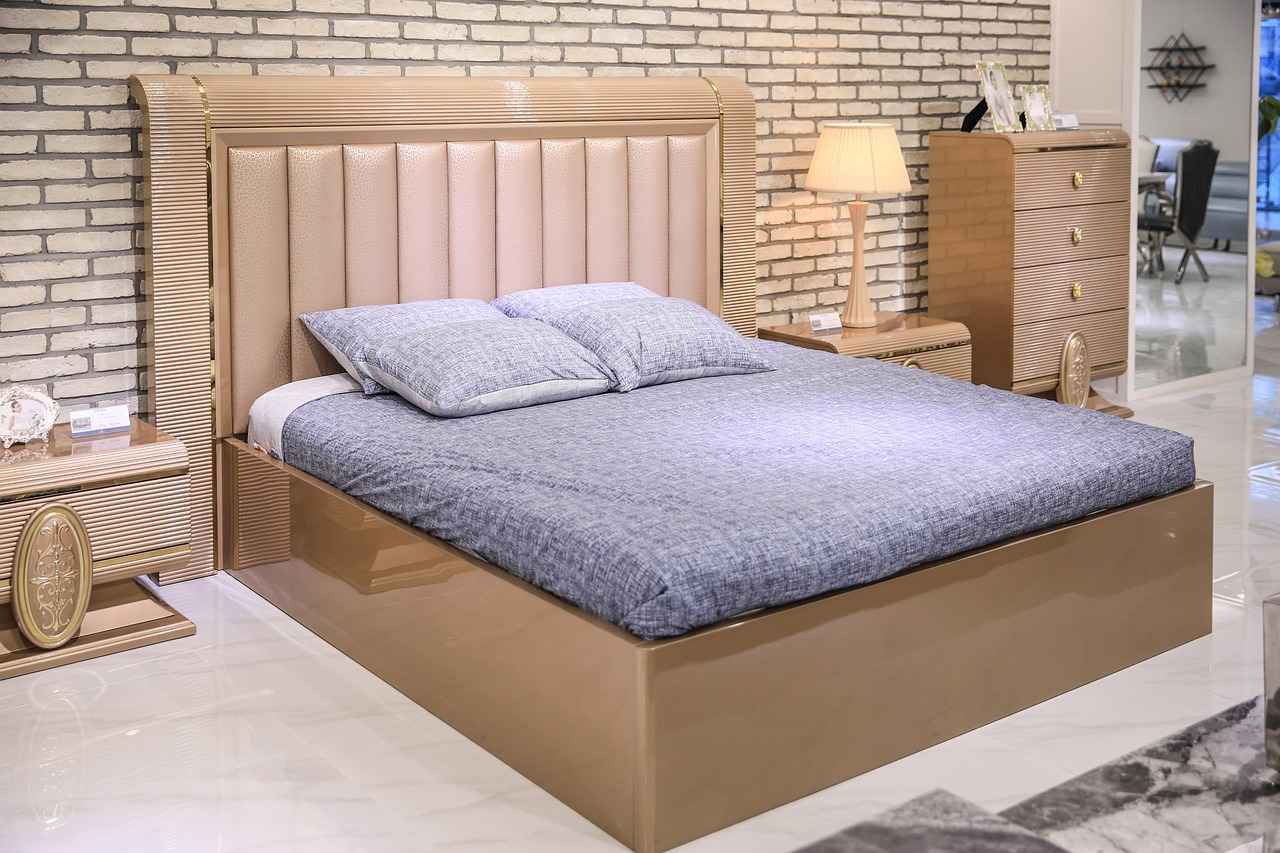
Color Palettes for Minimalist Bedrooms
Color plays a significant role in minimalist design. The right color palette can enhance the overall aesthetic of your bedroom, creating a serene and inviting atmosphere. In this section, we will explore various color schemes that align with minimalist principles, focusing on how to effectively implement them in your space.
In minimalist design, color choices are not just about aesthetics; they also influence mood and perception of space. A well-selected color palette can make a small room feel larger and more open, while also promoting a sense of tranquility. Minimalist color schemes often prioritize simplicity and harmony, allowing for a cohesive look that enhances the calming nature of the environment.
Neutral tones are a hallmark of minimalist design, serving as a versatile backdrop that can easily adapt to various styles. Shades such as white, beige, gray, and taupe create a peaceful ambiance, making them ideal for bedrooms. These colors reflect light beautifully, helping to brighten the space and create an airy feel.
- White: Represents purity and simplicity, making it a popular choice for minimalist interiors.
- Beige: Adds warmth without overwhelming the senses, providing a cozy yet clean look.
- Gray: Offers a sophisticated and modern touch, perfect for creating a contemporary minimalist aesthetic.
While neutral tones dominate minimalist design, accent colors can infuse personality without disrupting the overall harmony. When selecting accent colors, consider using muted or pastel shades that complement the neutrals. For instance, soft blues, gentle greens, or blush pinks can add a touch of warmth and interest.
- Soft Blue: Evokes calmness and serenity, ideal for a restful bedroom.
- Muted Green: Connects with nature, promoting a sense of balance and tranquility.
- Pastel Pink: Adds a subtle warmth, perfect for creating a welcoming atmosphere.
Incorporating darker shades can create a striking contrast against the lighter, neutral base. Deep navy, charcoal, or forest green can serve as excellent accent colors, adding depth and sophistication to the space. However, it’s essential to use these colors sparingly to maintain the minimalist aesthetic.
Tips for Using Dark Colors:- Limit the use of dark colors to one or two focal points, such as a feature wall or bedding.- Pair dark shades with ample natural light to prevent the space from feeling cramped.
In minimalist design, texture plays a critical role in adding depth to a color palette. Incorporating various materials, such as soft linens, smooth woods, or woven textiles, can enhance the overall aesthetic without introducing clutter. For example, a wooden bed frame paired with cotton bedding can create a harmonious balance of color and texture.
Choosing the right color palette for your minimalist bedroom is essential for achieving the desired aesthetic. By focusing on neutral tones, incorporating subtle accent colors, and balancing with texture, you can create a serene and inviting space that embodies the principles of minimalism. Remember, the goal is to foster a calming environment that promotes relaxation and tranquility.
Neutral Tones
In the realm of minimalist design, color plays a pivotal role in establishing a serene and uncluttered atmosphere. Among the various color schemes, stand out as a hallmark of this aesthetic, providing a foundation that promotes tranquility and harmony within a space. This section delves into the significance of neutral tones in minimalist bedrooms and offers practical tips on how to incorporate these calming colors effectively.
Neutral tones encompass a range of shades, including whites, beiges, grays, and soft earth tones. These colors are not only versatile but also create a sense of spaciousness, making them ideal for bedrooms, especially those with limited square footage. By utilizing neutral tones, you can foster an environment that feels open and airy, allowing for relaxation and rejuvenation.
| Neutral Tone | Effect |
|---|---|
| White | Creates a bright, clean atmosphere. |
| Beige | Adds warmth and coziness to the room. |
| Gray | Offers a sophisticated and modern feel. |
| Earth Tones | Brings a natural and calming vibe. |
When incorporating neutral tones into your bedroom, consider the following strategies:
- Paint Selection: Start with a neutral paint color for your walls. Soft whites or light grays can serve as a perfect backdrop, allowing other elements in the room to shine.
- Bedding Choices: Opt for bedding in similar neutral shades. This can include duvet covers, sheets, and pillows that complement the wall color, creating a cohesive look.
- Furniture Selection: Choose furniture pieces in natural wood finishes or painted in neutral colors. This will help maintain a consistent theme and promote a sense of calm.
- Textiles and Accessories: Incorporate various textures using neutral-toned rugs, curtains, and throw blankets. This adds depth to the room without overwhelming the minimalist aesthetic.
Additionally, to prevent your space from feeling too sterile or bland, consider the use of subtle patterns or textured materials. For instance, a light gray textured throw or a beige patterned rug can introduce visual interest while still adhering to the neutral palette.
Lighting also plays a crucial role in enhancing the effect of neutral tones. Natural light can make these shades appear more vibrant, while soft, warm artificial lighting can create a cozy atmosphere in the evenings. Consider using layered lighting solutions, such as bedside lamps and overhead fixtures, to achieve the desired ambiance.
In summary, neutral tones are essential for creating a calming and inviting bedroom environment in minimalist design. By carefully selecting your color palette and incorporating various textures and materials, you can achieve a serene space that promotes relaxation and well-being. Embrace the simplicity of neutral tones, and watch as your bedroom transforms into a peaceful retreat.
Accent Colors
In the realm of minimalist design, the use of accent colors can significantly transform a space, infusing it with personality and vibrancy without compromising the overall aesthetic. Minimalism is often characterized by a muted color palette, typically dominated by neutral tones such as whites, grays, and beiges. However, incorporating accent colors can enhance the visual interest and emotional resonance of a room.
Accent colors are bold hues that contrast with the primary color scheme of a space. They serve as focal points, drawing attention and creating a sense of depth. When used wisely, these colors can highlight architectural features or decor items, adding a touch of warmth and character. The key is to maintain a balance, ensuring that the accent colors enhance rather than overwhelm the minimalist ethos.
- Consider the Mood: Different colors evoke different emotions. For instance, blues and greens can create a calming atmosphere, while reds and yellows add energy and warmth.
- Complementary vs. Contrasting: Think about how your accent color interacts with the existing palette. Complementary colors can create harmony, while contrasting colors can add excitement.
- Test Before Committing: Always test paint samples or fabric swatches in your space to see how they look at different times of the day under varying lighting conditions.
There are several effective methods to introduce accent colors into a minimalist space:
- Furniture: Consider a bold-colored chair or a vibrant ottoman that stands out against a neutral backdrop. This can serve as a conversation piece while adhering to minimalist principles.
- Artwork: Large pieces of art with striking colors can act as focal points. Hang a colorful painting or a series of prints to draw the eye and create a visual anchor.
- Textiles: Use accent colors in your choice of cushions, throws, or rugs. These elements can easily be swapped out when you want to refresh the look of the room.
- Accent Walls: A single wall painted in a bold hue can dramatically change the feel of a room. This approach allows you to experiment without overwhelming the space.
While accent colors are essential for adding personality, it is crucial to maintain a balance. Too many bold colors can clutter a minimalist space, so it is advisable to limit the use of accent colors to a few key areas. A good rule of thumb is the 80/20 rule, where 80% of the space remains neutral and 20% incorporates accent colors.
Incorporating accent colors into a minimalist design can create a harmonious blend of simplicity and vibrancy. By carefully selecting and strategically placing these colors, you can enhance the aesthetic appeal of your space while preserving the essence of minimalism. Remember, the goal is to create a serene environment that reflects your personality without overwhelming the senses.
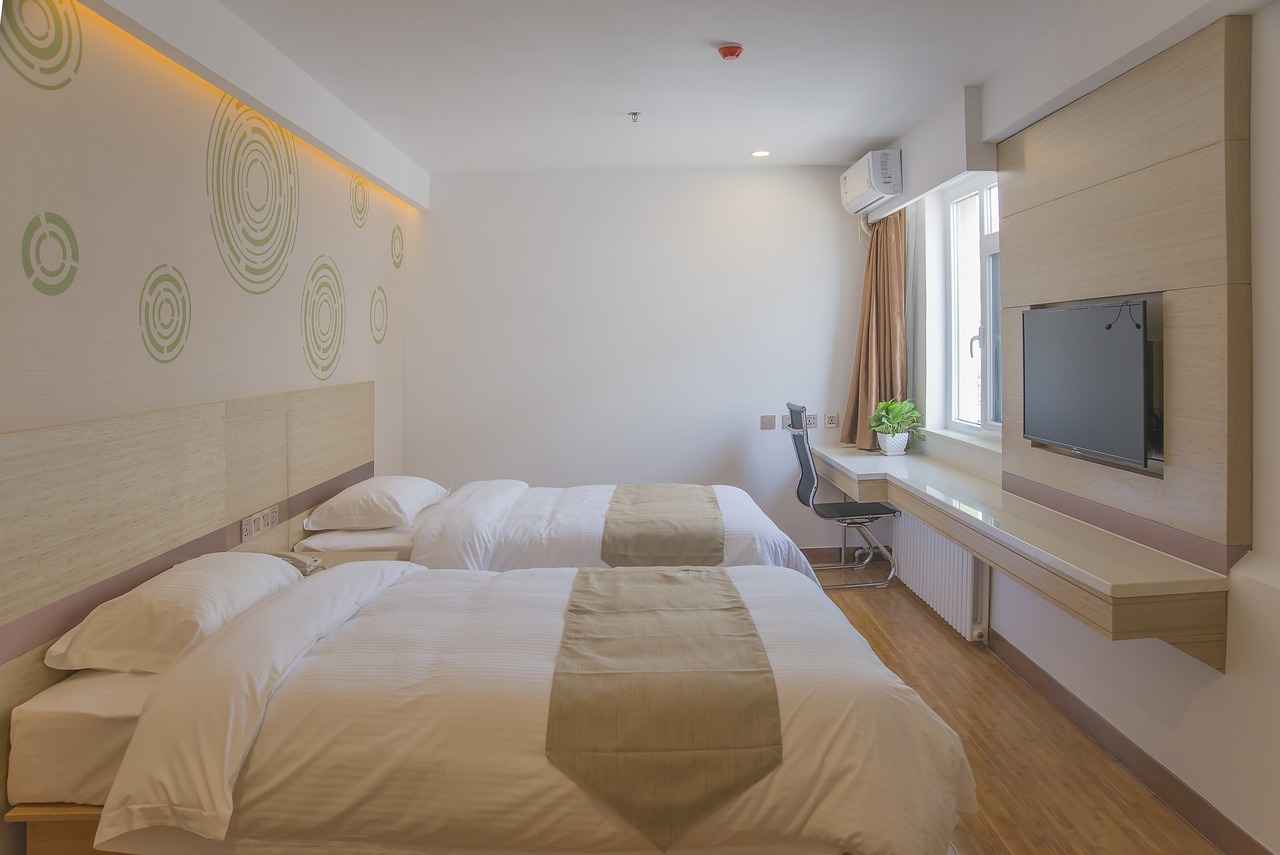
Incorporating Minimalist Beds into Your Home
Incorporating a minimalist bed into your home decor is a rewarding endeavor that can transform your space into a serene and functional oasis. This process requires thoughtful planning and an understanding of how minimalist principles can enhance your existing style. Below are practical tips to help you seamlessly integrate a minimalist bed into your living environment.
- Assess Your Space: Before making any decisions, take the time to evaluate your bedroom layout. Consider the size and shape of the room, as well as the placement of windows and doors. A minimalist bed should complement the space, enhancing its flow rather than disrupting it.
- Choose the Right Style: There are various styles of minimalist beds, including platform beds and Murphy beds. Each style offers unique benefits. For instance, platform beds have a low profile that can make a room feel more spacious, while Murphy beds are ideal for multi-functional spaces.
- Opt for Neutral Colors: Minimalist design thrives on a neutral color palette. Choosing bedding and a bed frame in shades of white, beige, or gray can create a calming atmosphere. If you want to add a pop of color, consider using accent pillows or throws that can be easily changed.
- Focus on Quality Materials: The materials you select for your minimalist bed can significantly impact the overall aesthetic. Wooden frames add warmth and texture, while metal frames provide a sleek, modern look. Ensure that the materials are durable and sustainable to align with minimalist values.
- Keep Bedding Simple: When selecting bedding, aim for simplicity. Choose solid colors or subtle patterns to maintain a clean look. High-quality linens can enhance comfort while still adhering to minimalist principles.
- Limit Accessories: In a minimalist bedroom, less is more. Limit decorative items on your bed and surrounding areas to maintain a clutter-free environment. A few carefully chosen pieces can add personality without overwhelming the space.
- Arrange Furniture Thoughtfully: The arrangement of furniture plays a crucial role in the overall feel of the room. Ensure that your minimalist bed is the focal point by positioning it strategically. Leave enough space around it to promote an airy atmosphere.
- Incorporate Natural Elements: Introducing natural elements such as plants or wooden accents can enhance the minimalist aesthetic. These elements not only add visual interest but also promote a sense of tranquility.
By following these tips, you can successfully incorporate a minimalist bed into your home, creating a space that is both functional and aesthetically pleasing. Remember, the key to minimalist design is to prioritize simplicity and functionality while ensuring that your personal style is reflected in the space.
Choosing the Right Bedding
When designing a minimalist bedroom, is crucial in achieving a cohesive and serene aesthetic. The bedding you select can either enhance or detract from the overall minimalist design. In this section, we will explore how to choose bedding that complements your minimalist bed design, ensuring a harmonious and tranquil environment.
- Opt for Simple Patterns: Minimalism thrives on simplicity. Choose bedding with subtle patterns or solid colors that do not overwhelm the senses. Geometric shapes or fine lines can add interest without cluttering the visual space.
- Stick to a Neutral Palette: A neutral color palette is essential in minimalist design. Shades like white, beige, gray, and soft pastels can create a calming atmosphere. These colors help in maintaining a clean and uncluttered look, allowing the bed and surrounding decor to stand out.
- Prioritize Quality Materials: When selecting bedding, focus on high-quality fabrics such as cotton, linen, or bamboo. These materials not only feel luxurious but also contribute to a peaceful sleeping environment. Moreover, they align with the minimalist principle of investing in fewer, high-quality items.
- Choose Versatile Bedding: Look for bedding that can easily transition between seasons. Lightweight duvets or quilts in neutral tones can be layered for warmth in colder months and removed for a cooler feel in warmer months. This adaptability supports a minimalist approach by reducing the need for multiple sets of bedding.
- Limit Decorative Elements: In a minimalist space, less is more. Avoid excessive decorative pillows or throws that can create visual clutter. Instead, opt for a few carefully chosen pieces that enhance the overall design without overwhelming it.
In addition to these tips, consider the overall theme of your bedroom. If your bed frame is made of wood, for instance, selecting bedding that complements the natural tones can create a cohesive look. Alternatively, if your bed has a modern metal frame, crisp white or monochromatic bedding can enhance its sleek design.
Another important aspect to consider is the functional use of your bedding. If you often change your bedding to suit your mood or the season, choose versatile pieces that can easily mix and match. This practice not only keeps your bedroom fresh but also aligns with the minimalist principle of maintaining a curated selection of items.
Finally, remember that the goal of minimalist design is to create a space that promotes relaxation and tranquility. The right bedding can play a significant role in achieving this. Focus on creating a sanctuary that reflects your personal style while adhering to the principles of minimalism.
Arranging Your Bedroom
Arranging your bedroom in a minimalist style is not just about aesthetics; it’s also about creating a serene and functional space that promotes relaxation and tranquility. A well-thought-out arrangement can significantly enhance the overall feel of your room, making it a peaceful retreat from the hustle and bustle of daily life.
Here are some essential tips to help you arrange your bedroom effectively while maintaining a clean, clutter-free environment:
- Start with a Focal Point: Every room needs a focal point, and in a bedroom, this is often the bed. Position your bed against the wall that allows for easy access from both sides, ideally facing the door. This arrangement not only creates a welcoming atmosphere but also enhances the room’s flow.
- Keep It Simple: In minimalist design, less is more. Choose a few key pieces of furniture that are functional and aesthetically pleasing. Avoid overcrowding the space with unnecessary items. A nightstand on either side of the bed can be useful, but ensure they are not too bulky.
- Optimize Space: Utilize vertical space to keep the floor area open. Consider wall-mounted shelves for books and decor, which can help minimize clutter on surfaces. A tall dresser can also serve as storage without taking up much floor space.
- Incorporate Natural Light: Arrange your furniture to maximize natural light. Position your bed near windows to take advantage of sunlight during the day. This not only brightens the room but also creates an inviting atmosphere.
- Mind the Flow: Ensure there’s enough space to move around comfortably. Leave at least 24 inches of walking space between the bed and other furniture pieces. This creates an open feel and prevents the room from feeling cramped.
- Choose Functional Decor: Select decor that serves a purpose. For instance, a stylish basket can hold extra blankets, while a sleek lamp can provide necessary lighting without adding visual clutter. Aim for decor that enhances the minimalist theme rather than detracts from it.
- Limit Color Palette: Stick to a cohesive color palette that promotes calmness. Neutral tones such as whites, grays, and beiges can create a soothing environment. If you want to add a splash of color, do so sparingly with accent pieces like cushions or artwork.
- Declutter Regularly: A minimalist bedroom requires ongoing maintenance. Regularly assess your belongings and remove items that no longer serve a purpose or bring joy. This practice not only keeps the space tidy but also reinforces the minimalist philosophy.
In conclusion, arranging your bedroom in a minimalist style involves thoughtful planning and intentional choices. By focusing on simplicity, functionality, and a few key design principles, you can create a serene environment that enhances your well-being. Remember, the goal of minimalism is to foster a peaceful atmosphere that allows you to unwind and recharge.
Frequently Asked Questions
- What are the key features of minimalist bed design?
Minimalist bed design focuses on simplicity, functionality, and clean lines. These beds often have a low profile and avoid unnecessary embellishments, creating a serene and uncluttered look.
- How do minimalist beds enhance space efficiency?
Minimalist beds are perfect for smaller rooms as their streamlined designs maximize available space. By eliminating bulky frames and excessive decorations, they create an open and airy environment.
- What materials are commonly used in minimalist bed designs?
Popular materials include wood for its warmth and metal for a sleek, modern look. Each material contributes uniquely to the overall aesthetic while maintaining the minimalist ethos.
- How can I incorporate accent colors in a minimalist bedroom?
Accent colors can be introduced through bedding, decorative pillows, or artwork. The key is to choose subtle shades that complement the neutral tones, adding personality without overwhelming the space.
- What tips can help me arrange my minimalist bedroom?
To maintain a clean, clutter-free environment, focus on functional furniture arrangements and limit decorative items. Keep surfaces clear and use hidden storage solutions to enhance the minimalist vibe.


